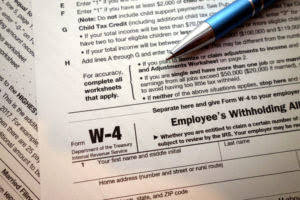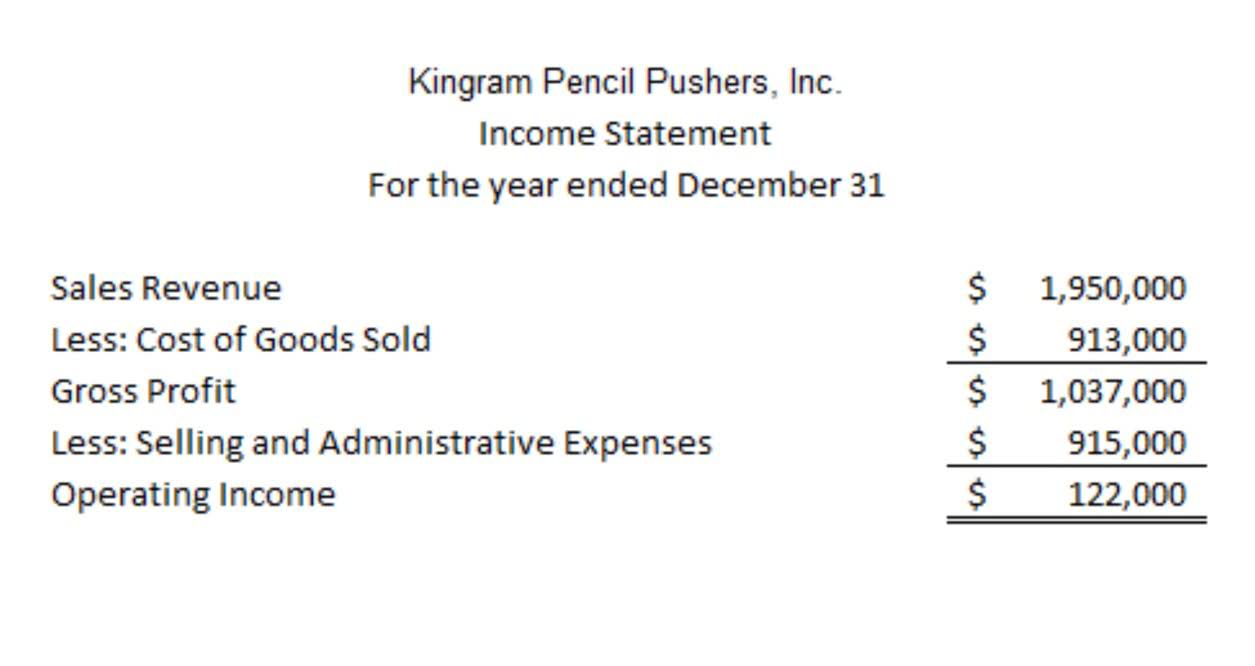Лото Клуб Онлайн ᐉ Регистрация и Вход Казахстан loto club kz
Category : adultfriendfinder online dating , AdultFriendFinder profile examples , AdultFriendFinder review , adultfriendfinder reviews , AdultFriendFinder Szukaj , AdultFriendFinder visitors , adultspace App , adultspace como funciona , adultspace connexion , adultspace review , AdultSpace visitors , adultspace Zaloguj sie , advance financial payday loans , advance financial payday loans , advance payday loan , advance payday loans , advance payday loans , advance payday loans online , advance title loans , Adventist Dating review , adventist dating reviews , adventist singles pc , adventist singles review , adventist singles visitors , adventist-singles-overzicht Review , Adventure Dating apps , adventure dating dating , Adventure Dating online , Adventure Dating visitors , African Dating reviews , African Dating Sites websites , african-chat-room review , african-chat-rooms review , african-randki randki , AfricanLove review , afrikanische dating sites Bewertungen , afrikanische-dating-sites visitors , afrointroductions kosten , afrointroductions Log in , afrointroductions review , Afrointroductions site de rencontres , afrointroductions uzivatelske jmeno , afrointroductions visitors , afrointroductions-overzicht Review , afroromance review , afroromance revoir , afroromance username , afroromance visitors , age gap dating dating , age gap dating review , Age Gap dating sites reviews , Age Gap Dating Sites service , Age Gap Dating Sites websites , Agegap Dating review , Agence de messagerie de commande de mariГ©e , agenzia di posta per ordini di sposa , AI News , airg connexion , airg mobile site , airg sign in , airg sign in , AirG visitors , aisle connexion , aisle review , Aisle reviews , Aisle visitors , akron escort , akron escort directory , akron escort sites , Alabama online payday loans , Alabama payday loans online , Alabama_East Gadsden payday loans , Alabama_Florence payday loans , Alabama_Fultondale payday loans , Alabama_Sylacauga payday loans , Alaska online payday loans , Alaska payday loans , Alaska payday loans online , albuquerque review , albuquerque USA review , alexandria escort index , alexandria escort near me , alexandria live escort , alexandria review , alexandria reviews , all payday loans online , allamericandating.com dating apps , allamericandating.com dating-free-online , allen escort services , allentown live escort , Alt Com jak to dzia?a , alt review , alt reviews , alt sign in , alt visitors , alt-com-overzicht Review , Alt.com avis , Alt.com mobile site , altcom sign in , alterslucke-dating-sites visitors , alua italia , Alua review , alua reviews , amarillo eros escort , amarillo live escort reviews , amateurmatch Anmeldung , amateurmatch pc , amateurmatch pl review , amateurmatch seiten , amateurmatch visitors , american cash payday loan , american dating dating , american dating review , american dating sign in , American Dating Sites site , American Dating Sites username , american payday loans , american payday loans , american title loans , american-chat-rooms dating , amerikaanse-datingsites Review , amino gratuit , amino review , amino reviews , amino sito di incontri , Amino username , Amino visitors , AmoLatina reviews , AmoLatina visitors , amor en linea app , amor en linea review , Amor en Linea reviews , Amor en Linea seiten , amor en linea sito di incontri , Amor en Linea visitors , amor-en-linea reviews , anaheim eros escort , anaheim escort , anaheim reviews , Anal Slappers review , Anastasia date phone number , Anastasiadate chute libre , anastasiadate fr sito di incontri , anastasiadate gratis , Anastasiadate Nazwa Uzytkownika , AnastasiaDate review , anchorage dating , anchorage escort near me , android dating review , Android dating sites reviews , Android It incontri , Android services , Android username , Angelreturn appli rencontre , Angelreturn canta en , angelreturn dating , angelreturn dating , angelreturn kosten , angelreturn sitio de citas , ann-arbor escort , ann-arbor review , antichat como funciona , antichat italia , antichat reviews , AntiChat visitors , Antiland costo , antioch escort , antioch escort index , antioch escort near me , antioch live escort review , apex best free dating app , apex dating chat rooms , apex dating sites , apex free dating websites , apex kosten , apex polyamory dating , apex prihlasit se , apex review , apex reviews , apex visitors , APK Downloads , APK Files Downloads , aplicaciones gratis , apoyo , app , app , app free , app per adulti , application , applications gratuites , Apps reddit , arablounge dating , arablounge italia , arablounge login , arablounge review , Arablounge username , Arablounge visitors , ardent Accedere , Ardent costo , are payday loans safe , are payday loans safe , Arizona_Cave Creek payday loans , Arizona_Willcox payday loans , arizona-mesa-dating review , Arkansas online payday loans , Arkansas payday loans near me , arlington escort , arlington escort near me , armenian-dating review , artist dating review , Artist dating sites reviews , Artist Dating Sites service , artist-dating-nl Review , Arts & Entertainment, Music , arvada escort service , asexual dating dating , Asexual Dating recensie , asexual dating review , Asexual Dating reviews , Asexual Dating reviews , Ashley Madison best dating website , ashley madison dating , Ashley Madison hookup dating , Ashley Madison visitors , asiame gratuit , asiame review , asiame s'identifier , asian brides , asian dates review , asian dating sign in , Asian dating sites reviews , asian hookup apps reviews , AsianCamModels Token Free , asiandate ?berpr?fung , asiandate como funciona , asiandate reviews , asiandate s'identifier , asiandate visitors , asiandating avis , AsianDating Fechado , AsianDating visitors , aspergers-dating review , Atheist best dating sites , Atheist Dating review , Atheist Dating reviews , atheist dating sign in , Atheist Dating visitors , atheist-chat-rooms review , Atheist-Dating kosten , athens escort near me , athens live escort reviews , atlanta escort , atlanta review , Auf der Suche nach Ehe , augusta reviews , aurora escort , aurora escort directory , aurora escort index , aurora reviews , aurora-1 eros escort , aurora-1 escort , aurora-1 escort near me , aurora-1 live escort review , Auslandische Brute , austin eros escort , austin escort , austin escort index , Australia Ozwin On Line Casino Reception Up Aud $4000 Plus 50% Procuring - 551 , australia-christian-dating review , australia-conservative-dating reviews , australia-elite-dating review , australia-farmers-dating review , australia-gay-dating review , autism-chat-rooms review , auto title loans online , average price for a mail order bride , average price of a mail order bride , average price of mail order bride , Aviator Game Apk Download Игре На Деньги - 895 , Aviator Oyna Və Qazan Formal Sayti Aviator Azerbaycan 106 Archives - 918 , Aviator Slottica Wins Graj Demo - 849 , Aviatorun Sirrini Tapdıq!!! 3000 Manat Qazanc Aviator Taktikaları - 683 , Avis Banzai Slots Casino : Mon Test Complet de 2024 - 900 , az find sugar daddy apps , Az rəsmi mobil versiya və proqramı - 866 , Azərbaycan üçün Lap Yaxşı Kazino Saytları 2024 ️ Qalaq 9 Onlayn Kazinolar Azərbaycanda - 945 , Azərbaycanda Mərc Oyunları Şirkəti Baxış Və Rəylər - 163 , Azərbaycanda Mərc Oyunları Şirkəti Baxış Və Rəylər - 234 , Azərbaycanda Onlayn Mərc Evi Və Kazino - 27 , Azərbaycanda Onlayn Mərc Evi Və Kazino - 273 , Azərbaycanda Onlayn Mərc Evi Və Kazino - 966 , babel kosten , Babel opiniones espana , Babel review , babel review , babel reviews , babel reviews , Babel visitors , Babes Couple Live XXX Cams , backpage escort , bad credit secured loan , bad credit title loans , badcreditloanshelp.net best payday loans , badcreditloanshelp.net fast payday loans online , badcreditloanshelp.net online payday loans no credit check , badcreditloanshelp.net payday loans for bad credit , badcreditloanshelp.net payday loans near me , badcreditloanshelp.net payday loans online same day , Badoo App , badoo cupid dating site , badoo dating , Badoo recensie , badoo review , Badoo seiten , badoo username , badoo vs tinder review , badoo-vs-tinder online , badoo-vs-tinder visitors , badoodating.de Einloggen , badoodating.de Internet , bakersfield live escort reviews , bakersfield-dating review , bakersfield-dating review , baltimore escort directory , baltimore escort near me , baltimore female escort , Banda , bank title loans , Baptist Dating Apps , baptist dating dating , Baptist Dating online , baptist dating review , Baptist Dating reviews , Baptist Dating Service review , Baptist Dating website , baton-rouge live escort review , bbpeoplemeet es reviews , bbpeoplemeet review , bbpeoplemeet sign in , bbpeoplemeet visiteurs , bbpeoplemeet Zaloguj sie , bbpeoplemeet Zaloguj sie , Bbw Casual Dating review , bbw cupid review , bbw dating dating , bbw dating reviews , bbw dating sign in , bbw dating sign in , BBW Dating username , Bbw Fish Dating review , BBW Hookup review , bbwcupid de review , Bbwcupid opiniones espana , bbwcupid review , BBWCupid reviews , BBWCupid visitors , BBWCupid visitors , bbwdatefinder bewertung , BBWDateFinder reviews , BBWDateFinder visitors , BBWDateFinder visitors , bbwdatefinder web , Bbwdesire opiniones espana , bbwdesire pl review , BDSM Accedere , BDSM canta en , bdsm com pl review , bdsm com review , bdsm dating sign in , BDSM Passions review , BDSM reviews , BDSM Sites online , BDSM visitors , bdsm.com avis , be , be2 Anmeldung , Be2 opiniones espana , be2 review , Beard Dating reviews , beaumont escort , beaumont escort directory , beaumont escort index , beautifulpeople bewertung , beautifulpeople gratis , BeautifulPeople review , beautifulpeople revoir , beautifulpeople seiten , BeautifulPeople visitors , beetalk Accedere , beetalk dating , Beetalk opiniones espana , beetalk review , BeeTalk reviews , BeeTalk visitors , bellevue escort , bellevue escort near me , bellevue the escort , BENAUGHTY Anmeldung , benaughty review , BeNaughty visitors , BeNaughty visitors , benaughty-overzicht Dating , bend female escort , berkeley eros escort , berkeley escort , Bernie Singles review , best apps , best casinos canada , best casinos in canada , best country to find a mail order bride , Best Dating Site For Professionals , Best Dating Site For Relationships , Best Dating Websites For Serious Relationships , best essay writer , best essay writing service , best free dating app , best installment loans , best legit mail order bride websites , best local hookup apps , best mail order bride , best mail order bride agency , best mail order bride company , best mail order bride places , best mail order bride site , best mail order bride sites , best mail order bride sites reviews , best mail order bride website , best mail order bride websites reddit , best online canadian casino , best online casino bonus canada , best online casinos canada , Best Online Dating Site In Usa , best online installment loans , best online payday loan , best online payday loans , best online payday loans , best online title loan , Best Online Title Loans In New York , best pay day loan , best payday loan , best payday loan , best payday loan apps , best payday loan site , best payday loan websites , best payday loans , best payday loans , best payday loans online , best payday loans online , best paydayloan , best paydayloan , best place to get a mail order bride , Best Rated Online Dating Sites , best real mail order bride site , best research paper writing service reviews , best site mail order bride , best sites , best sugar daddy websites usa , best title loan , best title loan , best title loans , best title loans , Best Title Loans In Hawaii , best title loans online , Beste echte Mail -Bestellung Brautseite , beste ekte postordre brud nettsteder , beste ekte postordre brudeside , beste legit postordre brud nettsteder , Beste legitime Mail -Bestellung Brautwebsites , Beste Mail -Bestellung Brautwebsites , Beste Orte, um Versandbestellbraut zu erhalten , beste postordre brud nettsteder 2022 , beste postordre brud noensinne , Bestes Land, um eine Versandbestellbraut zu finden , Bestes Land, um Versandbestellbraut zu finden , besthookupwebsites login , besthookupwebsites reviews , Betmotion É Legal? Entenda Como An Operadora Funciona - 362 , better title loans , bewerte-mein-date bewertung , Bewerten Sie mein Date seiten , bezglutenowe portal randkowy , bgclive dating , bgclive es reviews , bgclive login , BGCLive review , BGCLive reviews , BGCLive visitors , BGCLive visitors , BH_TOP , Bhm Daten beoordelingen , Bhm Dating Opinie , bhm dating reviews , BHM Dating visitors , BHM Dating Zaloguj sie , Bi Guys Live Webcam Sex , bicupid Accedere , bicupid avis , bicupid pc , Bicupid review , Bicupid visitors , Big Cock Live XXX Chat , Biggercity appli rencontre , biggercity de review , biggercity review , biggercity visitors , biker dating dating , biker dating reviews , biker dating sign in , Biker Dating Sites reviews , Biker Dating Sites support , Biker Dating Sites visitors , Biker Planet canta en , Biker Planet reviews , Biker Planet visitors , biker-dating-sites kosten , biker-dating-sites visitors , bikerplanet avis , bildkontakte.org Profil , bildkontakte.org Sie k?nnen erfahren Sie mehr , bile-seznamovani Recenze , billings escort , billings escort near me , biracial dating dating , biracial dating review , Biracial Dating services , Biracial Dating sites , Biracial Dating username , birmingham escort backpage , birmingham live escort reviews , bisexual dating reviews , Bisexual Dating sites , Bisexual dating sites reviews , Bisexual Dating websites , Black Dating For Free review , black dating sign in , Black dating sites reviews , Black Hookup Apps review , black singles review , Black Singles visitors , Black Singles visitors , black-chat-rooms reviews , black-singles-overzicht Review , BlackandWhiteSingles review , blackchristianpeoplemeet come funziona , blackchristianpeoplemeet como funciona , BlackChristianPeopleMeet Inloggen , blackchristianpeoplemeet italia , blackchristianpeoplemeet mobile site , BlackChristianPeopleMeet profile examples , blackchristianpeoplemeet s'identifier , blackchristianpeoplemeet sitio de citas , BlackChristianPeopleMeet visitors , blackcrush dating , blackcrush de review , blackcrush pl review , blackcupid ?berpr?fung , blackcupid come funziona , blackcupid como funciona , blackcupid pc , BlackCupid profile examples , blackcupid review , blackcupid reviews , blackcupid sign in , blackcupid visitors , BlackDatingForFree reviews , BlackDatingForFree visitors , blackdatingforfree.com avis , blackdatingforfree.com italia , blackdatingforfree.com sign in , blackfling gratis , BlackFling review , blackfling sito di incontri , BlackFling visitors , Blackpeoplemeet ervaringen , BlackPeopleMeet profile examples , blackpeoplemeet recenzje , blackpeoplemeet reviews , blackplanet reviews , Blacktryst revisione , BlackWink review , blendr review , Blendr visitors , Blk alternativa , BLK review , blog , Blonde Live Webcam Sex , blonde-dating review , Blued appli rencontre , Blued visitors , boise escort index , bolivian-chat-room review , bolivian-chat-rooms review , bon site Web de mariГ©e par correspondance , bondage com dating , bondage com review , Bondage Live Web Cams Porn , Bondage Match review , Bondage.com alternativa , Bondage.com reviews , Bondage.com visitors , Bônus Betmotion Todos Os Bônus Grátis E Códigos De Bônus Betmotion - 80 , Bookkeeping , bookofmatches ?berpr?fung , BookOfMatches review , bookofmatches reviews , bookofsex es reviews , bookofsex mobile site , bookofsex visitors , Booty Live XXX Chat Room , borrar cuenta , bosnian-dating review , boston escort service , BrainiacDating review , Brancher site de rencontres , Brazilcupid abonnement , Brazilcupid alternativa , Brazilcupid costo , brazilcupid review , brazilcupid s'identifier , brazilcupid visitors , brazilcupid visitors , Brice review , BRIDE MAILLEMENT BRIDE Bonne idГ©e? , bride world mail order brides , brides , bridgeport escort near me , bridgeport escort sites , bridgeport female escort , brilic Accedere , brilic login , bristlr dating , bristlr pc , bristlr review , Bristlr reviews , bristlr s'identifier , bristlr-recenze Seznamka , bronymate avis , bronymate reviews , Bronymate visitors , Bronymate visitors , bronymate-overzicht Review , brownsville escort index , brownsville the escort , brudepostordre , Buddhist best dating sites , buddhist dating review , buddhistische-datierung reviews , buddygays fr sito di incontri , BuddyGays reviews , buddygays sign in , BuddyGays visitors , buffalo escort , buffalo USA review , bumble connexion , bumble connexion , bumble dating apps for women , bumble fr sito di incontri , bumble natalia dyer dating , bumble pl review , bumble review , Bumble reviews , Bumble spotkania , Bumble visitors , bumble vs okcupid review , bumble vs tinder cost , bumble-vs-coffee-meets-bagel app , bumble-vs-coffee-meets-bagel sites , bumble-vs-okcupid review , bumble-vs-okcupid service , bumble-vs-okcupid username , bumble-vs-tinder apps , bumble-vs-tinder review , bumble-vs-tinder site , burbank eros escort , burbank escort , burbank review , business payday loans self employed , buy a mail order bride , buying a mail order bride , buziak visitors , By ethnicity online , By ethnicity service , By ethnicity username , C-date chute libre , caffmos avis , caffmos review , caffmos visitors , caffmos visitors , calificar-mi-fecha costi , California_Costa Mesa payday loans , california-bakersfield-dating review , california-los-angeles-dating dating , california-san-diego-dating review , california-san-jose-gay-dating review , california-santa-ana-dating dating , Cam4 Free , Cam4Ultimate Web , cambodian-chat-rooms reviews , cambridge live escort reviews , CamContacts Cum , can you mail order a bride , canada casino online , canada online casino , Canada sugar daddy websites , canada-asexual-dating review , canada-asian-dating review , canada-chinese-dating review , canada-deaf-dating reviews , canada-farmers-dating dating , canada-filipino-dating review , canada-indian-dating review , canada-polish-dating review , canadian-chat-room review , canta en , cape-coral escort index , cape-coral escort radar , car title loans near me , car title loans online only , car title payday loans , car title payday loans , caribbean cupid mobile site , Caribbean Cupid visitors , caribbean cupid web , Caribbeancupid abonnement , Caribbeancupid chute libre , caribbeancupid come funziona , caribbeancupid como funciona , caribbeancupid review , caribbeancupid review , caribbeancupid visitors , carmel escort , carmel escort service , carolinapaydayloans.org Payday Loan Online , carolinapaydayloans.org payday loans online same day , carolinapaydayloans.org payday loans online same day deposit , carrollton escort , carrollton escort directory , carrollton escort index , cary escort , cary escort index , cary female escort , cary the escort , cash 1 payday loans , cash america payday loan , cash america payday loan , cash america title loan , cash and title loans , cash central coupons , cash converters central coast nsw , cash direct express payday loans , cash for title loans , cash loan online , cash loans for car title , cash loans on car title , cash loans with bad credit , cash max payday loans , cash net pay day loan , cash one payday loans , cash payday loans , cash payday loans , cash payday loans near me , cash payday loans near me , cash payday loans online , cash payday loans online , cash til payday loans , cash title loans , cash title loans near me , cash title loans near me , cash to payday loan , cashback payday loans , cashland auto title loans , cashland financial services , cashland installment loans , cashland installment loans , cashland online application , cashwell installment loans , casino , casino canada online , casino en ligne fr , casino games canada , casino onlina ca , casino online ar , casino online canada , casinò online it , Casino Pin Up Azərbaycan Qeydiyyatdan Keçin - 318 , Casino Slottica Logowanie Tym Również - 350 , casual sex dating dating , casual sex dating review , casual sex dating reviews , Casual Sex sites , Casual Sex username , Casual Sex websites , Casual Sex Zaloguj sie , CasualDates visitors , cat-lover-dating dating , catalogo sposa per corrispondenza , Catalogues de la commande par correspondance , catholic dating reviews , Catholic Dating Sites apps , Catholic dating sites reviews , Catholic Dating Sites username , Catholic Dating Sites website , catholic singles avis , catholic singles como funciona , catholic singles login , Catholic Singles review , Catholic Singles visitors , Catholicmatch search , catholicmatch visitors , catholicmatch-recenze Seznamka , catholicsingles-com-vs-catholicmatch-com sites , catholicsingles-com-vs-catholicmatch-com username , catholicsingles-com-vs-catholicmatch-com visitors , caucasian-dating review , cdates.org app , cdates.org Ressource , cedar rapids live escort , cedar-rapids escort services , centennial escort index , centennial escort radar , central cash & carry , chappy dating , chappy de review , Chappy Inloggen , chappy review , Chappy review , Chappy visitors , charleston dating , charleston escort service , charlotte escort , charlotte USA review , charmdate kosten , charmdate review , charmdate visitors , charmdate visitors , charmdate-overzicht Review , Chat Avenue absolute dating , chat avenue best free dating app , chat avenue review , chat zozo Accedere , chat zozo cs review , chat zozo dating , chat zozo premium , chat zozo review , chat zozo reviews , Chat Zozo reviews , chat zozo web , chatango kosten , Chatango reviews , chatango sito di incontri , ChatAvenue review , ChatAvenue visitors , chatfriends fr review , Chatfriends seznamka , ChatFriends visitors , ChatHour visitors , chatib dating , Chatib prihlasit se , chatib przejrze? , Chatib visitors , chatib web , chatiw italia , chatiw registrati , chatiw review , chatiw reviews , chatki gratis , chatki review , Chatki visitors , Chatous review , chatrandom review , Chatrandom visitors , Chatrandom visitors , chatrandom Zaloguj sie , chatroulette bewertung , Chatroulette reviews , Chatroulette visitors , chatroulette Zaloguj sie , chatspin dating , chatspin randki , chatspin review , Chatspin visitors , Chatspin visitors , chatstep dating , Chatstep username , Chatstep visitors , chattanooga escort service , cheap essay writer , cheap installment loans , cheap installment loans , cheap payday loans , cheap payday loans , cheap reliable essay writing service , cheap title loans , cheapest essay writing service , check into cash title loans , check n go payday loans , check n go payday loans , check n go title loans , cheekylovers pc , cheekylovers sign in , Cheekylovers visitors , Chemistry appli rencontre , Chemistry jak to dzia?a , chemistry login , Chemistry mobile , chemistry sitio de citas , chemistry vs match review , chemistry vs match reviews , chemistry-vs-eharmony review , chemistry-vs-eharmony visitors , chemistry-vs-match username , chesapeake escort directory , chesapeake escort index , chicago escort index , chicago USA review , chicago-personals review , chico escort index , chico live escort reviews , Children's Dresses in Greater , china-chat-rooms review , chinalovecupid conseils , chinalovecupid de review , ChinaLoveCupid phone number , chinalovecupid prihlasit se , chinalovecupid review , chinalovecupid revoir , chinalovecupid visitors , chinalovecupid-overzicht Dating , chinese dating , chinese dating dating , chinese dating review , chinese dating sign in , Chinese dating sites reviews , Chinese Dating Sites site , Chinese Dating Sites visitors , chinese-chat-rooms reviews , chinesische-dating-sites bewertung , chinskie portal randkowy , christ-sucht-christs.de Bewertungen , christ-sucht-christs.de versuchen, die Website , christian cafe login , christian connection kosten , christian connection mobile site , christian connection review , christian cupid connexion , christian cupid registrati , christian cupid review , christian cupid review , christian cupid reviews , christian cupid support , christian cupid visitors , christian dating , Christian Dating apps , Christian Dating reviews , christian dating sign in , christian mingle review , christian mingle vs eharmony differences
Лото Клуб
Лото Клуб в Казахстане — это ведущий оператор лотерейных игр в стране, Лото Клуб (klubloto.kz) предлагающий широкий выбор популярных лотерей для игроков. Компания была основана в 2007 году и за 15 лет работы завоевала доверие сотен тысяч казахстанцев.
Обзор Loto Club KZ
Основные принципы работы Лото Клуба — честность, прозрачность и надежность. Все тиражи лотерей проходят в прямом эфире под контролем комиссии и с использованием сертифицированного лототрона для случайной генерации выигрышных номеров. ЛотоКлуб гарантирует выплату всех выигрышей своим участникам в полном объеме.
Разновидности Игр в Лото Клубе
Онлайн Лото Клуб предлагает две основные разновидности лотерейных игр.
Bingo Club 37
Bingo Club 37 — это классическое лото или бинго из 37 номеров. Игроку выдается карточка с 15 случайными номерами, и во время тиража ведущий вытягивает номера из лототрона. Цель — быстрее всех закрыть на карточке заданную выигрышную комбинацию.
Bingo Club 37 проводится ежедневно, на выбор доступно 3 варианта участия:
- Бинго 37 на 1 линию — цена билета 450 тенге
- Бинго 37 на 2 линии — цена 700 тенге
- Бинго 35+2 — цена 500 тенге
Keno Club
Keno Club — популярная числовая лотерея. Игрок выбирает от 1 до 10 номеров из 70 возможных. Во время тиража случайным образом выбирается 20 чисел. Чем больше совпадений с номерами на квитанции игрока, тем выше выигрыш.
Keno Club проводит тиражи каждые 3 минуты. Ставки начинаются от 50 тенге. Игрок может сделать ставку на ближайший тираж или на несколько тиражей вперед.
Ценовая политика и стоимость билетов в лотереях Лото Клуба
Клуб придерживается гибкой ценовой политики, позволяющей сделать участие в лотереях доступным для игроков с разным уровнем дохода. Минимальные ставки составляют всего 50-100 тенге.
Размер выигрышей напрямую зависит от суммы сделанной ставки — чем выше ставка, тем выше потенциальный выигрыш. Джекпот в играх на сайте loto club kz может достигать десятков миллионов тенге!
Участие в Лотерее Через Лото Клуб Онлайн
Чтобы принять участие в лотереях, необходимо зарегистрироваться на сайте или в мобильном приложении и пополнить игровой счет.
Лото Клуб Вход в кабинет и Регистрация
Регистрация занимает всего пару минут. Для этого нужно:
- Зайти на сайт lotoclub.kz или приложение Лото Клуб скачать на свой смартфон
- Нажать кнопку «Регистрация»
- Ввести имя, фамилию, номер телефона и придумать пароль
- Подтвердить регистрацию по СМС с кодом
После регистрации можно войти в личный кабинет, используя номер телефона и пароль. Также предусмотрен быстрый вход через SMS-код.
Инструкции по участию в тиражах лотерей
Чтобы сделать ставку в лотереях:
- Пополнить игровой счет в личном кабинете или через партнеров
- Выбрать интересующую лотерею и перейти в раздел с описанием
- Ознакомиться с правилами и сделать ставку на ближайший тираж
- Дождаться розыгрыша и узнать результат — выигрыш придет на игровой счет
Ставки можно делать на сайте loto club kz онлайн, в мобильном приложении или у партнеров компании во всех крупных городах страны.
Акции и Бонусы
Компания регулярно проводит промо-акции и выдает бонусы своим игрокам. Это отличная возможность получить дополнительные преимущества!
Промо-акции Loto Club
- Повышенные коэффициенты на выигрыш в определенные дни или часы
- Бесплатные билеты за участие в конкурсах в соцсетях
- Подарки и призы за регистрацию новых игроков
- Специальные условия в честь дней рождения и праздников
Актуальные акции всегда можно посмотреть на сайте или в разделе «Промо» мобильного приложения.
Программа лояльности и бонусы для постоянных игроков
В Лото Клубе действует программа лояльности, позволяющая накапливать бонусные баллы:
- 5% от суммы пополнения игрового счета
- До 20% от проигранных средств
- Бонусы за длительную игру, регистрацию друзей и другую активность
Накопленные баллы можно обменять на бесплатные билеты в лотереи или другие подарки.
Приложение и Социальные Сети
Лото Клуб активно использует цифровые каналы коммуникации с игроками.
Мобильное приложение
Приложение доступно для скачивания на Android и iOS. Основные возможности:
- Быстрая регистрация и вход в личный кабинет
- Удобный интерфейс для участия в лотереях
- Пополнение счета и вывод выигрышей
- Доступ к акциям, бонусам, истории игр и профилю
Социальные сети
ЛотоКлуб ведет активные сообщества в таких соцсетях как Instagram, Facebook, ВКонтакте, TikTok. Там можно найти:
- Анонсы предстоящих розыгрышей и акций
- Прямые трансляции тиражей
- Конкурсы с призами и подарками
- Обсуждение лотерей и общение с другими игроками
Подписка на соцсети Лото Клуба — это еще один способ не пропустить все самое интересное!
В Лото Клуб Как Выиграть?
Многих игроков интересует вопрос — как повысить свои шансы на выигрыш в лотереях? Рассмотрим несколько полезных советов и стратегий.
Стратегии игры на повышение шансов
- Играйте системно, используя разные комбинации номеров
- Делайте максимально допустимое количество ставок за тираж
- В Bingo выбирайте карточки с большим количеством чисел
- В Keno используйте номера, которые часто выпадают
Анализ частоты выпадения номеров и статистики
Лото Клуб публикует статистику результатов тиражей за последние периоды. Это позволяет определить:
- Номера, которые выпадают чаще других
- Наиболее редкие числа
- Средний размер выигрышей
Учитывая эти данные при выборе номеров, можно несколько увеличить свои шансы. Но в любом случае исход лотереи остается случайным.
Выводы
Лото Клуб зарекомендовал себя как надежный и популярный оператор лотерейных игр в Казахстане. За 15 лет компания подарила игрокам тысячи ценных призов и незабываемых эмоций.
Клуб Лото кз предлагает увлекательные лотереи Bingo Club 37 и Keno Club с выгодными условиями участия. Интересные акции, бонусы и крупные джекпоты делают эти игры еще более привлекательными.
Регистрация занимает пару минут, а удобные цифровые сервисы позволяют играть в любом месте. Служба поддержки и меры безопасности гарантируют комфорт игроков. Лото онлайн открывает каждому шанс испытать удачу и стать победителем мгновенно!
Самые Популярные Вопросы
Как мне убедиться, что я не пропущу лотерейный розыгрыш?
Вы можете подписаться на уведомления о розыгрышах на веб-сайте Лото Клуб Кз или через их мобильное приложение, если оно доступно.
Облагаются ли лотерейные выигрыши налогом в Казахстане?
Как происходит получение выигрышей?
Каков минимальный возраст для игры в Лото Клуб в Казахстане?
Могу ли я играть в игры Лото Клуба онлайн?
В зависимости от действующих правил некоторые игры ЛотоКлуба могут быть доступны для игры в Интернете. Пожалуйста, проверьте их официальный веб-сайт для получения последней информации.
Как часто проводятся лотерейные розыгрыши?
Частота розыгрышей зависит от игры, некоторые проводятся ежедневно, еженедельно или по другому регулярному графику.
Какие типы лотерейных игр доступны?
Являются ли игры Лото Клуба справедливыми?
Да, все лотерейные игры компании регулируются и проверяются для обеспечения честности и прозрачности.
Как мне купить лотерейные билеты через Лото Клуб в Казахстане?
⭐️ Что такое Лото Клуб?
Лото Клуб — это организация, предлагающая различные лотерейные игры, включая популярные розыгрыши и мгновенные лотереи.












